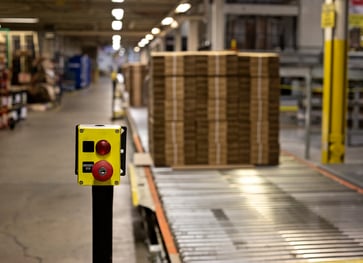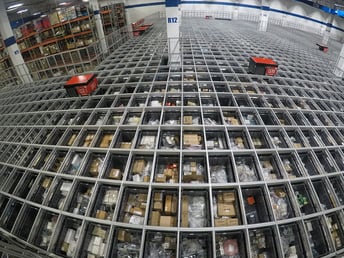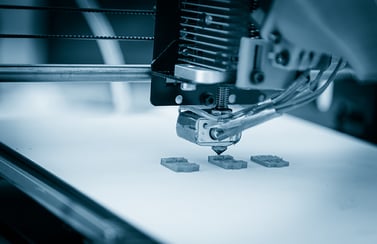 Today, more then ever, industrial automation is becoming highly prevalent and relied upon to keep up with growing industry expectations. Stemming from the Industrial Revolution manufacturing rapidly increased, which then brought Mechanization. This made the manufacturing process more optimized and required less labor and amplified production. Currently, with the implementation of automation, we can expand production even further. Now machines are capable of much more and are able to work around the clock and extended productivity.
Today, more then ever, industrial automation is becoming highly prevalent and relied upon to keep up with growing industry expectations. Stemming from the Industrial Revolution manufacturing rapidly increased, which then brought Mechanization. This made the manufacturing process more optimized and required less labor and amplified production. Currently, with the implementation of automation, we can expand production even further. Now machines are capable of much more and are able to work around the clock and extended productivity.
These automation systems then allow for higher production capabilities, lower labor costs, and increased reliably. This is formed with different technological systems like robotics and programmable logic controls (PCLs) to allow for automation through industrial operations.
Outlook
These new intelligent systems are making operations quicker while also increasing the quality and quantities of production. Increasing production reduces the need for human intervention and eliminates human error. There are many reasons on why an industry will want to invest in automation. The two main ones being cost saving and efficiency. Manufacturers not looking toward automation can lose out on valuable growth.
Examples of Industrial Automation
 Robotics has been a huge topic of interest as technology is advancing. Advantages like high-quality reassurance, consistency, and faster turnout rates create a valuable asset. Instead of having a human worker assemble boxes for shipments, a robot can easily accomplish this menial task. This can then leave human workers to focus on more specialized and specific tasks. By optimizing this area through autonomy, it will overall benefit production assembly greatly. Here is a short video from Amazon testing out robots that will package up your order “Amazon is Testing Robots That Box Up Your Orders”.
Robotics has been a huge topic of interest as technology is advancing. Advantages like high-quality reassurance, consistency, and faster turnout rates create a valuable asset. Instead of having a human worker assemble boxes for shipments, a robot can easily accomplish this menial task. This can then leave human workers to focus on more specialized and specific tasks. By optimizing this area through autonomy, it will overall benefit production assembly greatly. Here is a short video from Amazon testing out robots that will package up your order “Amazon is Testing Robots That Box Up Your Orders”.
The Swiss Log AutoStore is a automated material handling system that stores materials in a compact space, also known as the “Future of Warehousing.” This system offers a fast retrieval speed, more compact storage, and less likelihood of a picking error compared with human material handling. Collecting items through an autonomous system rather than having an individual searching for a specific piece for shipment. Time is critical and solutions like these can make a company operate more efficiently. Global competition is ever increasing and staying relevant is highly reliant on autonomous practices like this.
3D printing is a tool being used in manufacturing to create tangible models through computers. This is yet another tool that is enviable and  manufacturing companies see great potential in utilizing these types of tools. Three-dimensional printers can produce a certain part in a material. Since its infancy, in the 1980s, this technology has developed and is now shaping the way manufacturers see their operations. If a company needs a part, they can now print the exact one, rather then ordering it and having to wait for shipping. This is far more efficient and speeds up the process for both customer and supplier.
manufacturing companies see great potential in utilizing these types of tools. Three-dimensional printers can produce a certain part in a material. Since its infancy, in the 1980s, this technology has developed and is now shaping the way manufacturers see their operations. If a company needs a part, they can now print the exact one, rather then ordering it and having to wait for shipping. This is far more efficient and speeds up the process for both customer and supplier.
CNC (Computerized Numerical Control) machines allow an operator to take a material, either metal, plastic, or wood, and turn that material into a specified part. This is done through a computer that gives the machine highly specific dimensions and requirements. Different from a 3D printer since this machine takes a given piece of material and the final products are formed from that. The CNC machine is operated through numerical control, and the programming language used is called the G-code. Most standard machines are only able to move along two axes. However, this precise machine is able to cut out 3D objects by incorporating another new axis. Here is a blog post on “What is CNC and Where to Repair Yours.” this explains more in-depth the functions of a CNC machine.
Conclusion
There is more and more pressure every day about cutting cost and saving time to keep up with competitive demands. Automation machinery is imperative to keep up with expectations and not fall behind. This type of automation is completely reshaping and reinventing the manufacturing industry. Industrial automation is continuously accelerating, with huge potential and opportunities. As a manufacturer, embracing and adopting this technology is vital to the longevity of an operation.
What are your thoughts on automation today?
To learn more about Radwell International


